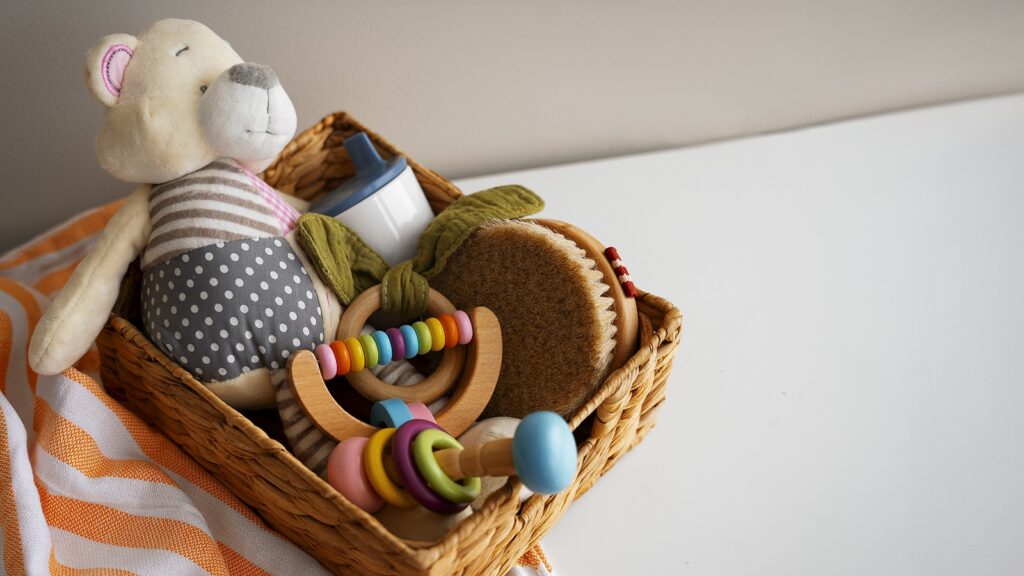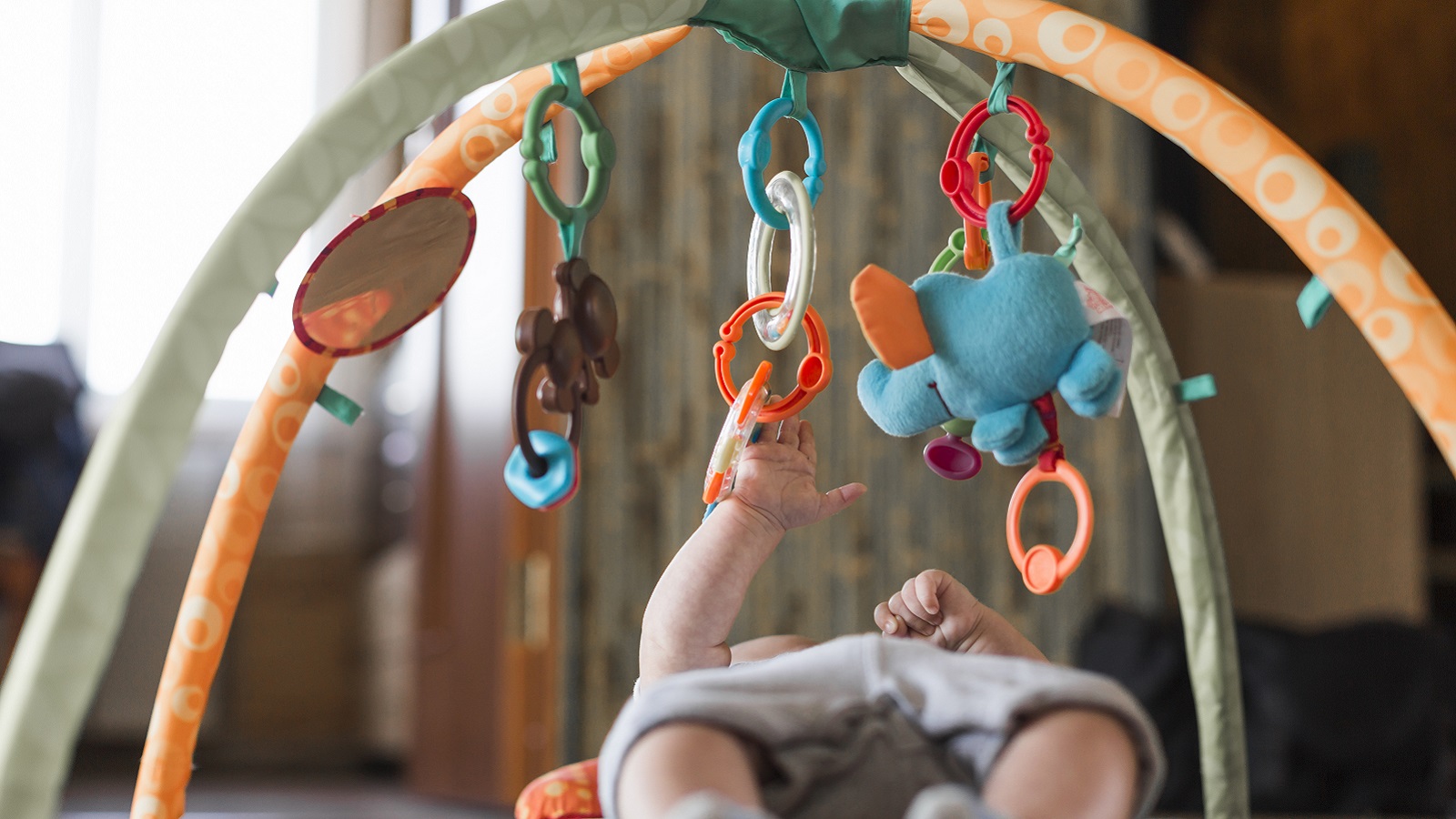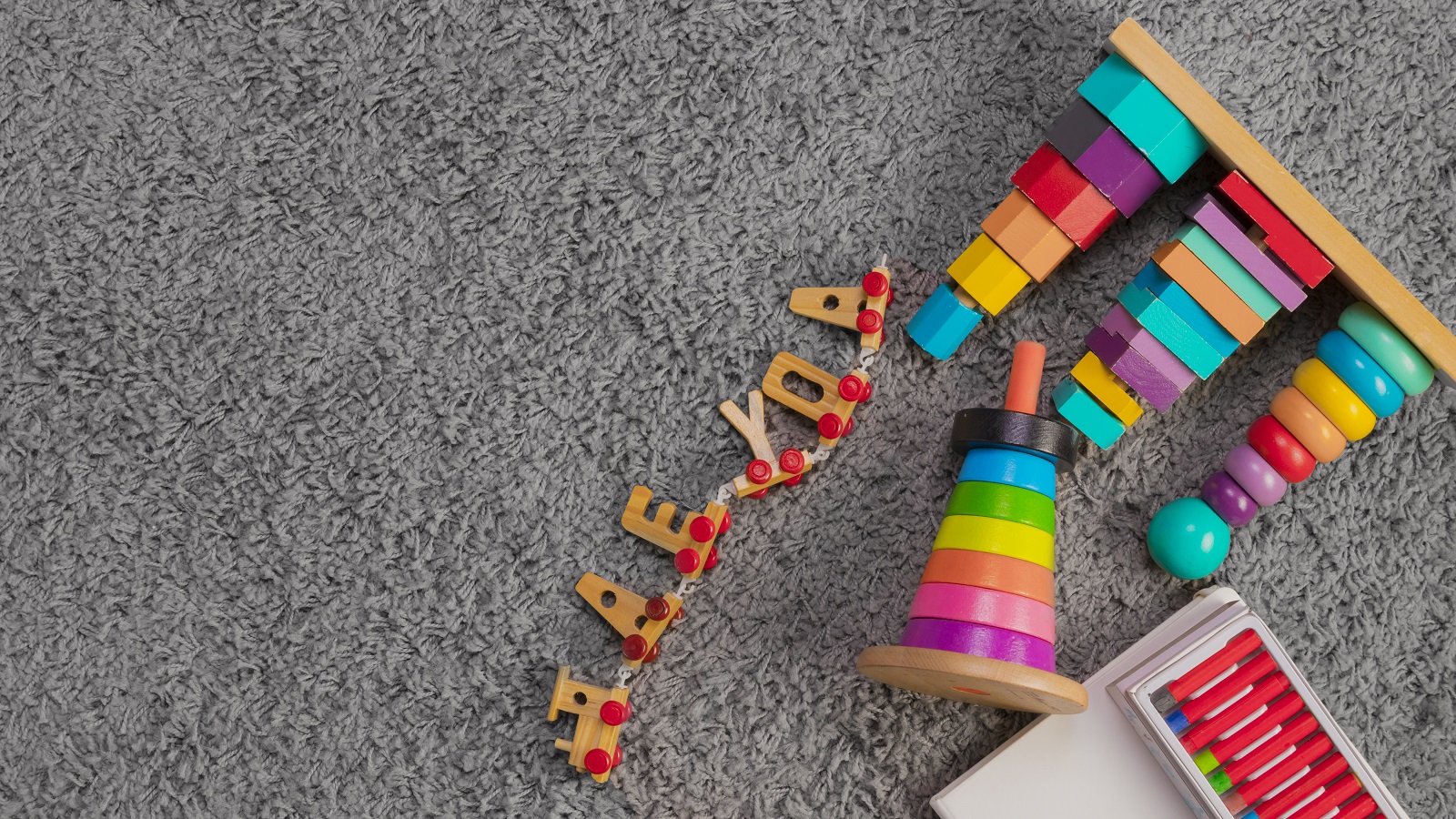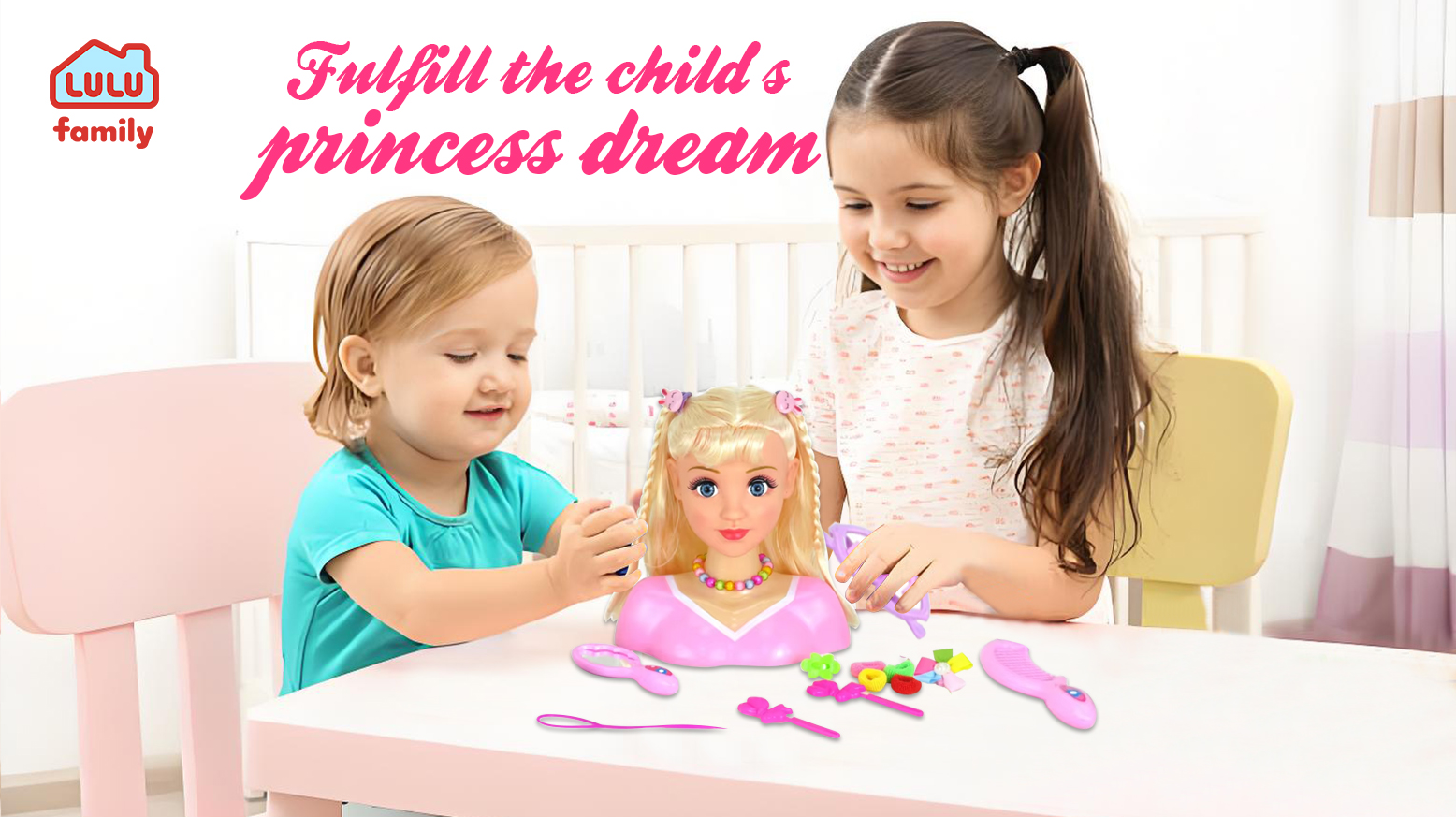Babies love playing with toys, but toys can also harbor dirt and grime. Plush toys, for example, attract dust and bacteria, plastic toys can harbor saliva and food residue, and wooden toys can also become stained.
If these contaminants aren’t cleaned and disinfected promptly, babies can introduce germs into their mouths and noses while playing, leading to various illnesses, such as diarrhea and respiratory infections.
Therefore, proper disinfection of parent-child toys is crucial to protect your baby’s health effectively.
Types of children's toys
The main types of children’s toys include: beach toys, image toys, technical toys, puzzle and assembly toys, building and structural toys, sports activity toys, musical sound toys, labor activity toys, decorative toys, and homemade toys.
The general educational requirements for toys are that they are conducive to promoting the all-round development of children’s physical, moral, intellectual, and aesthetic aspects. They are in line with children’s age characteristics and can satisfy their curiosity, restlessness, and desire for exploration.
They have beautiful shapes and reflect the typical characteristics of things; they have varied activities and help encourage learning. They meet hygiene requirements, have non-toxic colors, and are easy to clean and disinfect; they meet safety requirements, etc.
Generally speaking, children’s toys are designed and manufactured for children of a specific age group, and their characteristics are related to the age and intellectual stage of the children. The use of children’s toys is based on a certain degree of adaptability.
As a children’s toy, it has a key factor is that, it must be able to attract children’s attention. This requires the toy to have bright colors, rich sounds, and easy operation.
It’s worth noting that, because children are in a period of constant growth and instability, they develop different hobbies at different ages and generally tend to get bored with the old and love the new.
Therefore, children’s toy stores should segment their toys by age group: for example, by age groups 0-3, 3-7, 7-10, and 10-14.
In terms of materials, common children’s toys include wooden toys, metal toys, plush toys, etc.; in terms of functions, the most popular toys among parents are those that develop intelligence.

Disinfection Methods For Toys
1. Sun Exposure: Choose a sunny day and place your plush toy in the sun for about 6 hours. The sun’s ultraviolet rays can kill many bacteria and mites.
Be sure to turn the toy over during sun exposure to ensure every part is exposed to the sun. This method is suitable for toys like your child’s beloved teddy bear or bunny pillow.
2. Pat Cleaning: After sun exposure, gently pat the plush toy with a small stick to remove dust and dirt. Be careful not to apply too much force, as this can damage the toy.
3. Cleaning with a Special Detergent: If the toy is particularly dirty, use a special plush toy cleaner. Dilute it according to the instructions and gently wipe it with a soft cloth.
Rinse thoroughly with clean water and pat dry with a dry towel. For example, a dirty cartoon plush cushion made by a child is suitable for this treatment.
4. Steam Sterilization: Use a garment steamer and hold it 10-15 cm away from the plush toy, moving the steamer in a circular motion to evenly heat the toy.
The high-temperature steam sterilizes without getting the toy too wet. Plush comfort toys for babies are very suitable for steam sterilization.
(2) Plastic Toys
1. Rinse with clean water: First, rinse plastic toys under running water to remove any obvious surface stains. Children’s plastic cars and building blocks can be treated this way.
2. Soak and disinfect: Prepare a basin of warm water and add an appropriate amount of baby disinfectant or vinegar (mix vinegar and water in a ratio of 1:10).
Soak the plastic toys for 15-20 minutes to effectively kill bacteria. After soaking, rinse thoroughly with clean water and place in a well-ventilated area to dry.
3. Boil and disinfect: Plastic toys that are not susceptible to high temperatures, such as simple plastic bowls and spoons, can be boiled in a pot of water for 5-10 minutes. Make sure the water covers the toys. Remove from the pot and drain thoroughly.
(3) Wooden Toys
1. Wipe Clean: Gently wipe wooden toys with a clean, damp cloth to remove dust and stains. This applies to wooden puzzles and wooden horses.
2. Vinegar Disinfection: Mix a solution of 1:5 vinegar and water. Use a soft cloth to wipe wooden toys. White vinegar disinfects and prevents the wood from drying out and cracking. Afterward, wipe dry with a dry cloth.
3. Sun Drying: Place wooden toys in the sun for a while to disinfect them with ultraviolet rays. However, avoid exposing them to sunlight for too long, as this can cause the wood to warp.
1. Disassembly and Cleaning: First, remove the battery from the electronic toy, then disassemble the toy according to the instructions.
Wipe each component with a damp cloth to remove dust and dirt. Items like electric trains and music boxes require disassembly and cleaning.
2. Alcohol Wipe: After disassembling, gently wipe the disassembled components with a cotton ball dipped in 75% alcohol to disinfect and sterilize. Wait for the alcohol to completely evaporate before reassembling.
3. Avoid Water Ingress: After reassembly, wipe the entire toy with a dry cloth to ensure no residual moisture. Be especially careful when disinfecting electronic toys. Avoid allowing water to enter components such as the motor, as this can damage the toy.
Frequency of toy disinfection
Frequently played with toys, such as stuffed animals and building blocks, should be disinfected once or twice a week.
If your baby is sick or the toys are visibly soiled (e.g., dropped on the floor, covered in dust, or touched by another sick child), disinfect them immediately.
For toys that aren’t played with often, disinfect them every two weeks or once a month.
Disinfection Precautions
1. Read the instructions: Before disinfecting toys, be sure to carefully read the instructions to understand whether they can be washed, exposed to sunlight, or treated with specific disinfection methods to avoid damaging them.
For example, some toys made of special materials cannot be sterilized at high temperatures, so do not boil them.
2. Protecting Toys: Handle toys with care during disinfection, handling them gently to avoid scratches or cracks.
For example, when washing plush toys, avoid pulling on their fur.
3. Proper Storage: After disinfection, toys should be stored in a clean, dry, and well-ventilated area.
You can use a dedicated toy storage box to organize and organize toys to prevent further soiling.
4. Personal Protection: When disinfecting toys, parents are advised to wear gloves and wash their hands immediately after disinfecting to avoid any potential health risks to themselves and their baby.
5. Choosing a Disinfectant: Choose a disinfectant suitable for toys, such as baby-grade disinfectant or a mild white vinegar solution.
Avoid using harsh products such as chlorine-based disinfectants, as they may harm your baby.
Special Situation Handling
If your baby accidentally puts a toy in their mouth, remove it immediately and rinse the surface with clean water. If the toy is dirty, disinfect it according to the corresponding disinfection method mentioned above.
If your baby chews an electric toy with batteries, remove the batteries first and ensure there are no electrical leaks or other hazards before disinfecting it.
If the toy is damaged or has sharp edges, do not let your baby play with it to prevent scratches.
Conclusion
Toy disinfection is crucial for maintaining a baby’s health. Parents should understand the disinfection methods for toys made of different materials, follow the appropriate disinfection frequency, and pay attention to various precautions during the disinfection process.
This way, babies can grow up happily surrounded by clean, hygienic toys, free from germs. We encourage every parent to prioritize toy disinfection and create a healthy play environment for their children.






